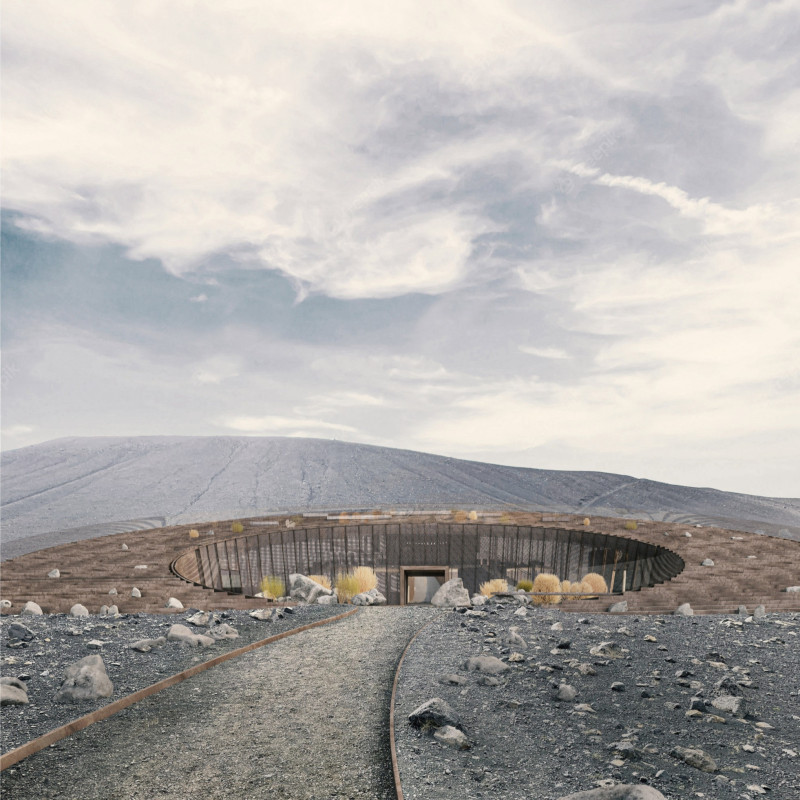5 key facts about this project
The architectural design known as Coffee on Path is located near Myvatn Lake in Iceland. This project serves as a coffee shop and acts as an access point to the nearby volcano. It integrates into the surrounding landscape, drawing inspiration from the shapes of the local geological features, particularly the circular design of the nearby crater. The project's purpose is to provide a space for visitors to enjoy refreshments while engaging with the exceptional natural environment.
The building's form is characterized by a slightly inclined disk shape, capturing a sense of continuity with the landscape. This design approach encourages visitors to experience a flow between the indoor and outdoor spaces. Large glazed openings allow for ample natural light, enhancing the visitor experience and creating a visual connection to the dramatic surroundings.
Design and Material Choices
Coffee on Path stands out due to its careful selection of materials that reflect the rugged terrain of its environment. The primary materials include weathering steel sheets for the exterior, which allow the building to weather naturally and blend into its geographic context. Concrete is employed within the structure for its durability and strength, while wooden elements are used throughout the interior to introduce warmth and create an inviting atmosphere. Additionally, copper fixtures provide subtle references to the geothermal activity of the area, further connecting the architectural design to its volcanic landscape.
The interior layout of the project encourages interaction and movement. The main coffee shop is strategically placed on a mezzanine level, providing visitors with elevated views of the surrounding landscape. This design not only enhances the visual experience but also fosters a communal atmosphere. Spaces within the building include a welcome area, an information point, and areas dedicated to service and storage, all designed to facilitate a seamless visitor experience.
Integration with the Environment
A defining characteristic of this project is its emphasis on integrating architecture with its site. The inclined disk shape reflects the topography of the volcanic landscape, allowing the building to sit harmoniously within its setting rather than imposing upon it. The observation deck on the roof serves as a vantage point for visitors, providing expansive views of the volcanic landscape and encouraging exploration of the natural features.
The architectural design prioritizes user engagement, accessibility, and education regarding the local geography. Spaces within the building effectively facilitate information sharing about the nearby volcano and its geological significance, creating an informative hub for tourists.
The architectural plans, sections, and overall design approach of Coffee on Path offer a comprehensive exploration of how architecture can enhance the user experience while celebrating the unique aspects of its environment. To gain deeper insights into this project, consider reviewing the architectural plans and designs that detail its innovative approaches and spatial configurations.






















































